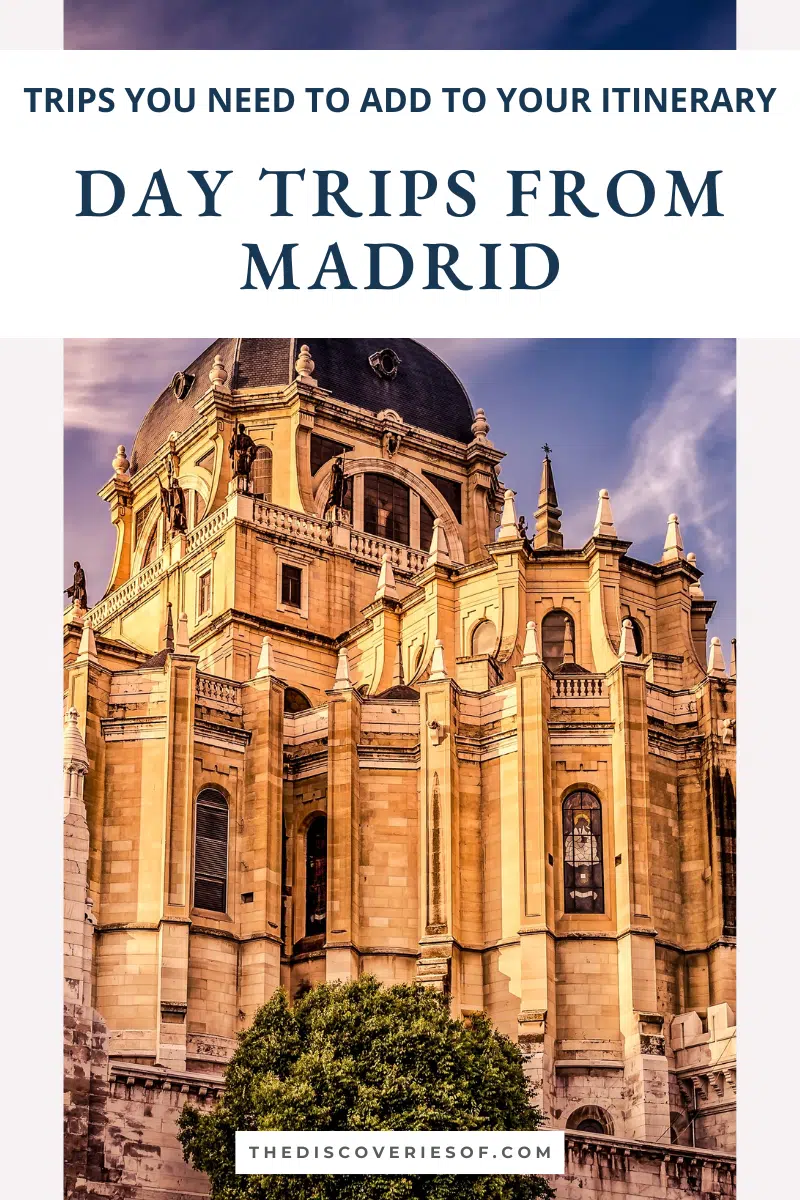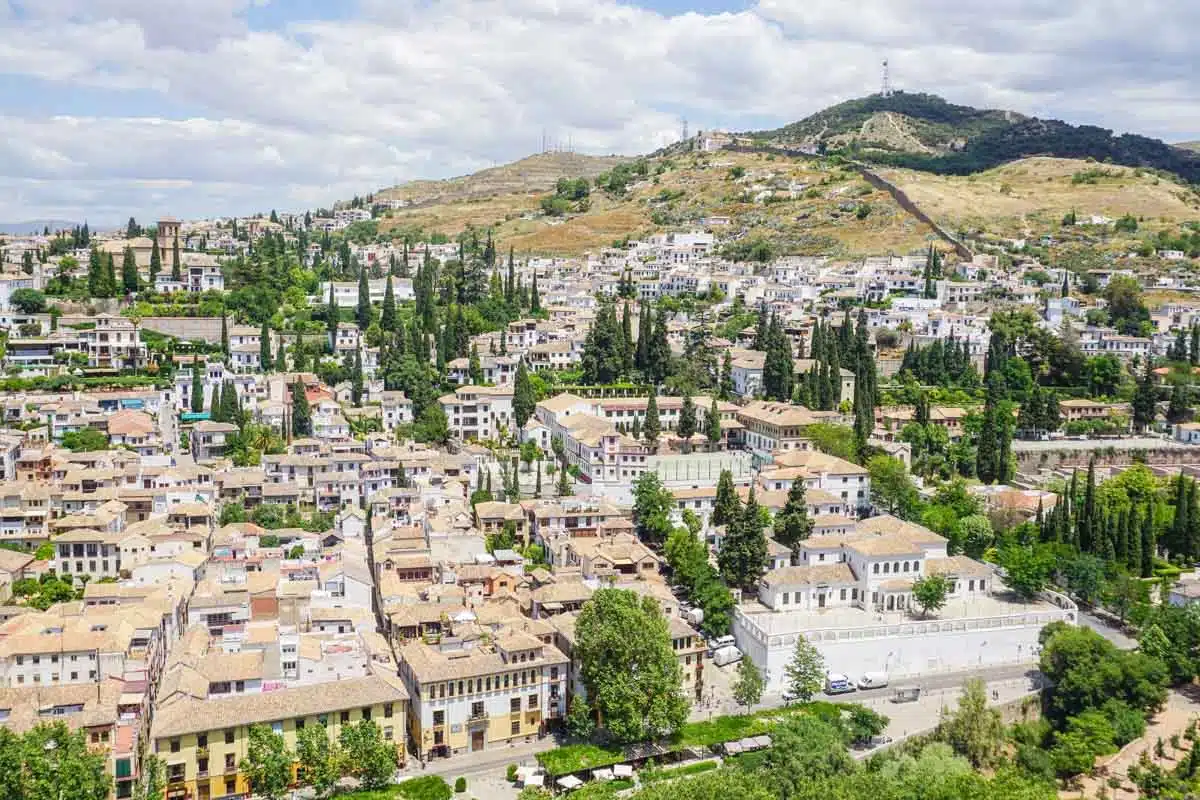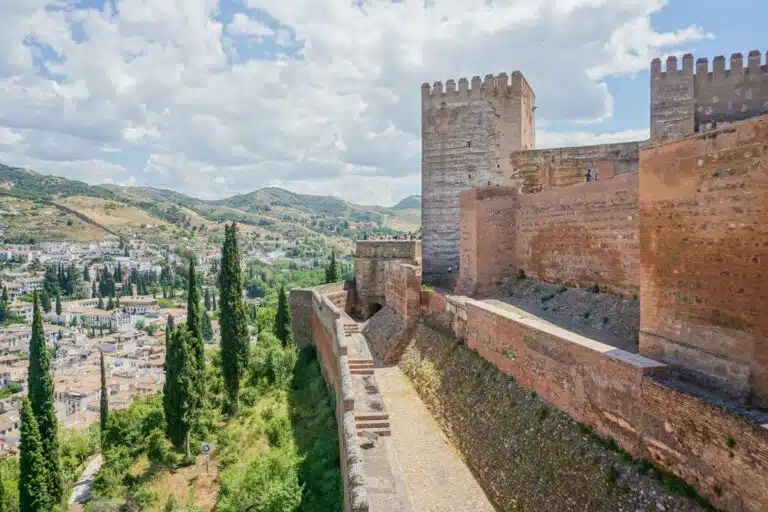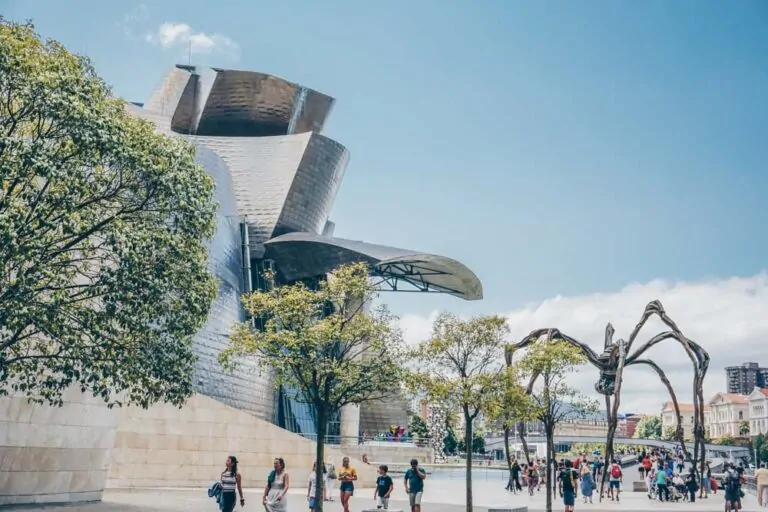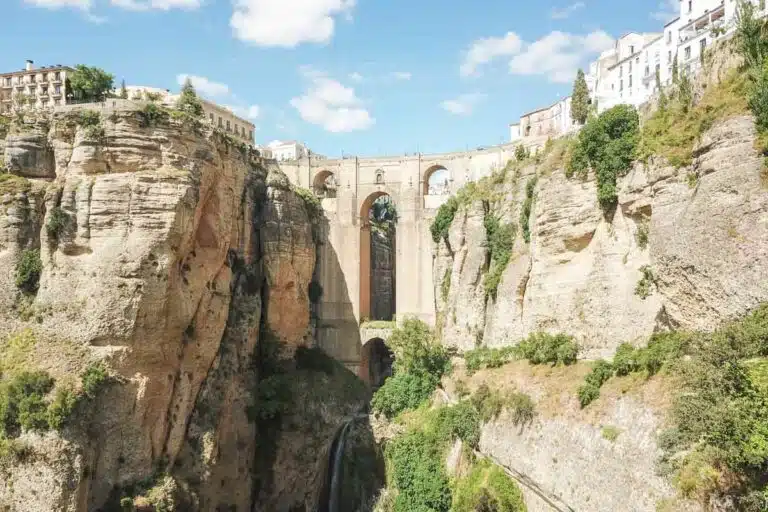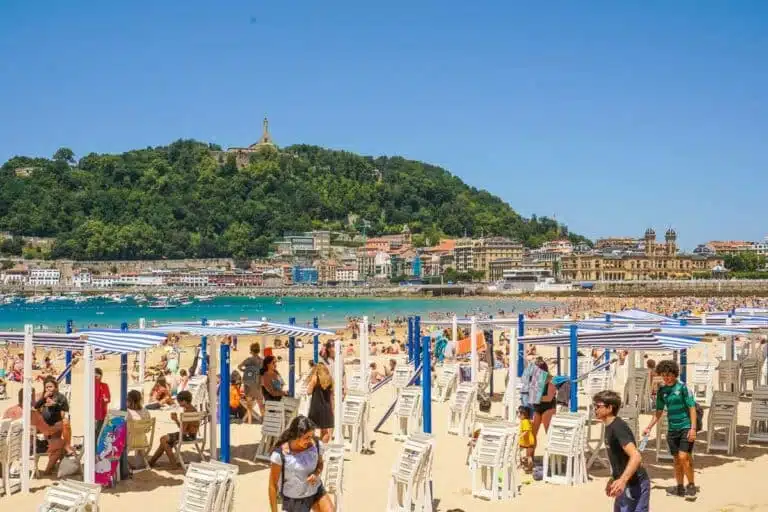Madrid is straight-up awesome, but you know what – there are a lot of places in the surrounding regions that are rather fabulous too. Discover the best day trips from Madrid with this in-depth guide.
Had your fair share of fun in Madrid? While I’m not quite sure that it’s possible to tire of Madrid’s cobbled streets and charming eateries, there comes a time when you want to see something a little different.
It’s no secret that I love Spain, and at this point, I’ve been fortunate enough to spend a lot of time there in a lot of different regions… and guess what? The regions near Madrid are brimming with stunning cities and villages that are worth exploring.
Enough of the chit chat – from the first capital of Spain (that’s Toledo in case you hadn’t guessed) to the world-famous Barcelona, add these brilliant places to your itinerary.
Best Day Trips from Madrid
Toledo
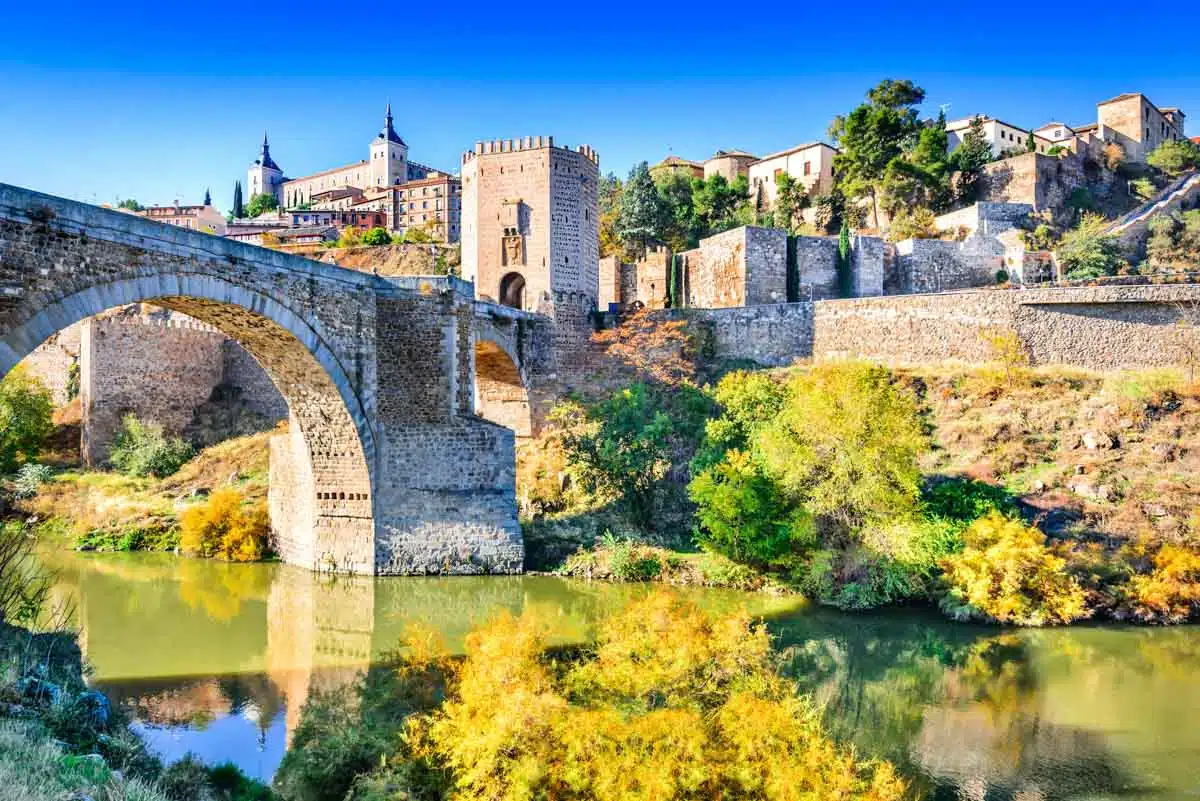
A mere 30 minutes from Madrid, Toledo is undoubtedly one of Spain’s prettiest cities. Perched on a hill and encircled by the deep gulf of the Tagus River, it’s a fitting location for what was the first capital city of Spain.
It’s not hard to see where it gets its UNESCO World Heritage status from – ringed by Gothic and Moorish walls, along with a towering Alcàzar and a splendid Cathedral, it’s a living museum where Christian, Jewish and Islamic histories intertwine.
Although it’s impossible to do justice to the city on one trip, do yourself a favour and narrow in on a few highlights.
Start by visiting the Cathedral – the country’s finest Gothic cathedral (perhaps after Burgos). It was built between 1227 and 1493, on the site of what had been the Moorish Great Mosque. Stunning as the Cathedral is in its entirety, be sure to pay particular attention the the famous bell in the north tower – nicknamed the Campagna Gorda, it weighs a whopping 17,515kg.
Not far from the cathedral, the Monastery of San Juan de los Reyes is another must. It was founded in 1476 as the burial place of the Catholic Monarchs… although it wasn’t completed until the 17th century. Be sure to pop onto the terrace which has great views of the city.
Other top spots include the El Greco Museum (he was, after all, the city’s most famous resident), the Puerta del Sol and the Mirador de Valle. Go to the latter for jaw-dropping vistas – particularly at sunset.
Do
How to Get There: Take the high-speed train from Madrid’s Atocha station to Toledo station.
Average journey duration: 30 minutes.
Hassle-free option: Book This Madrid to Toledo Day Tour
Cordoba
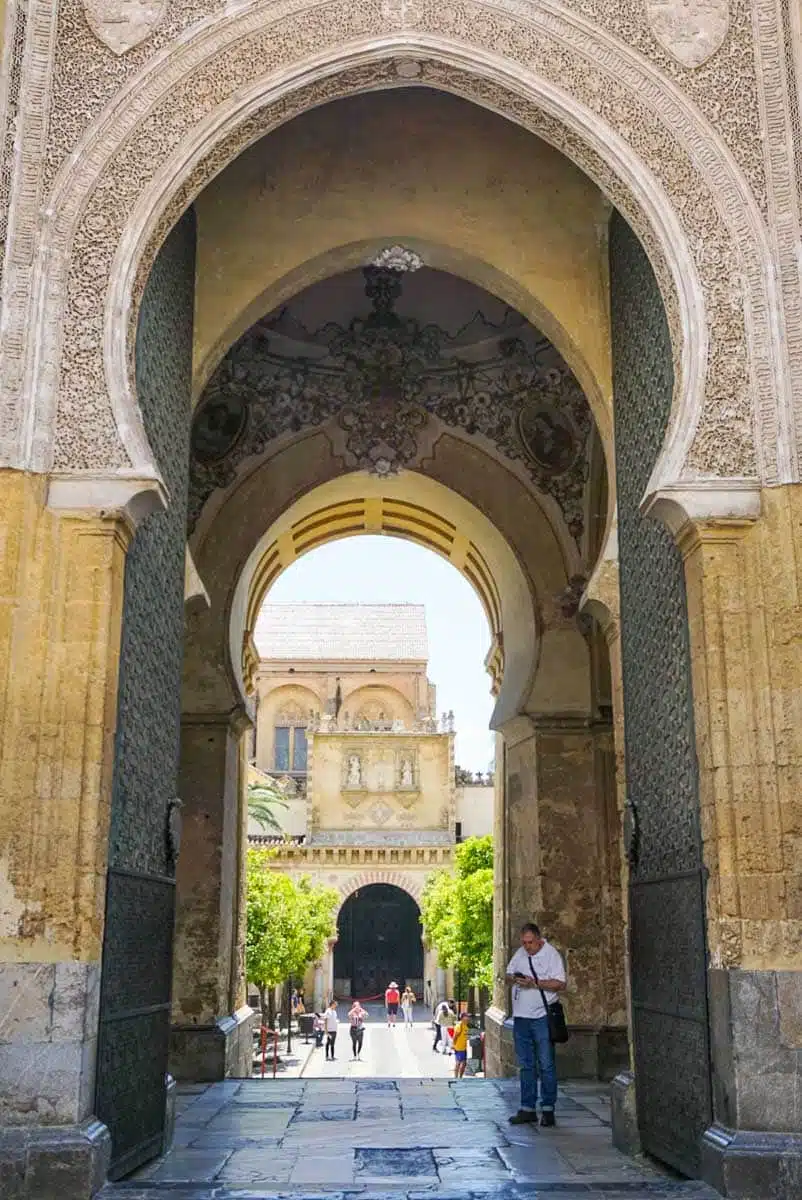
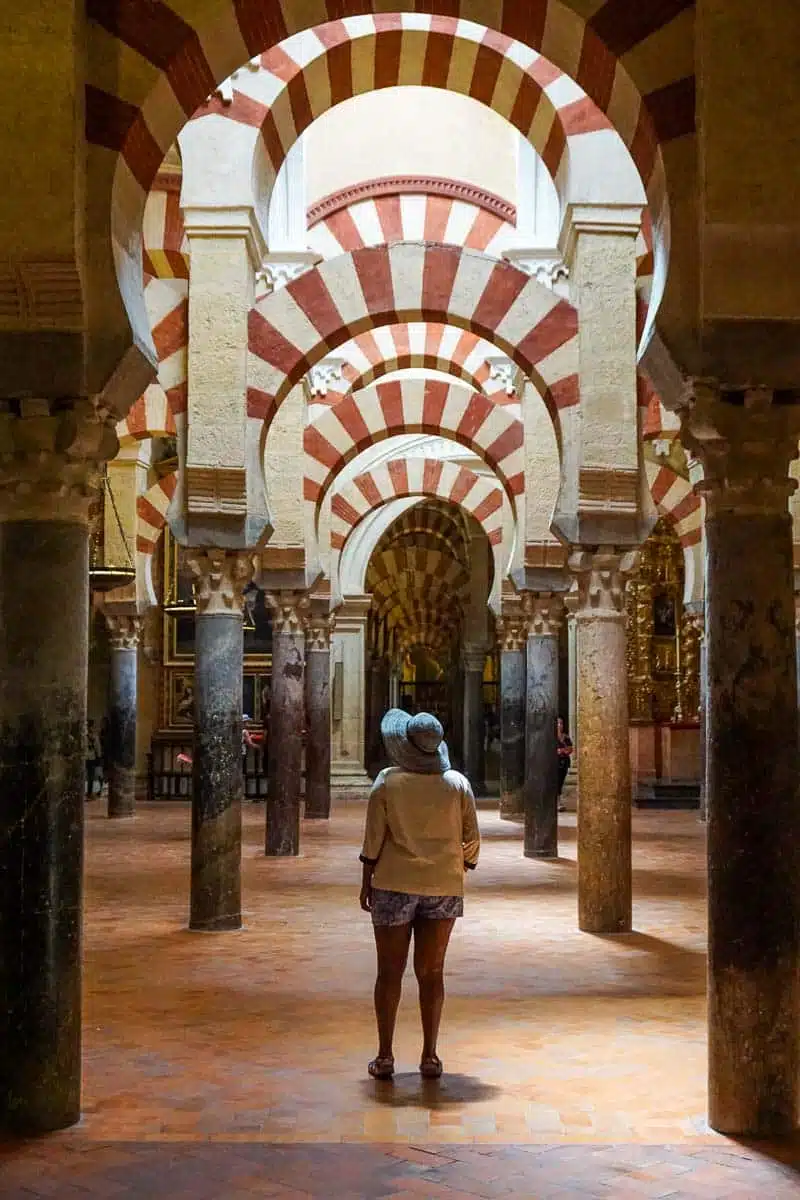
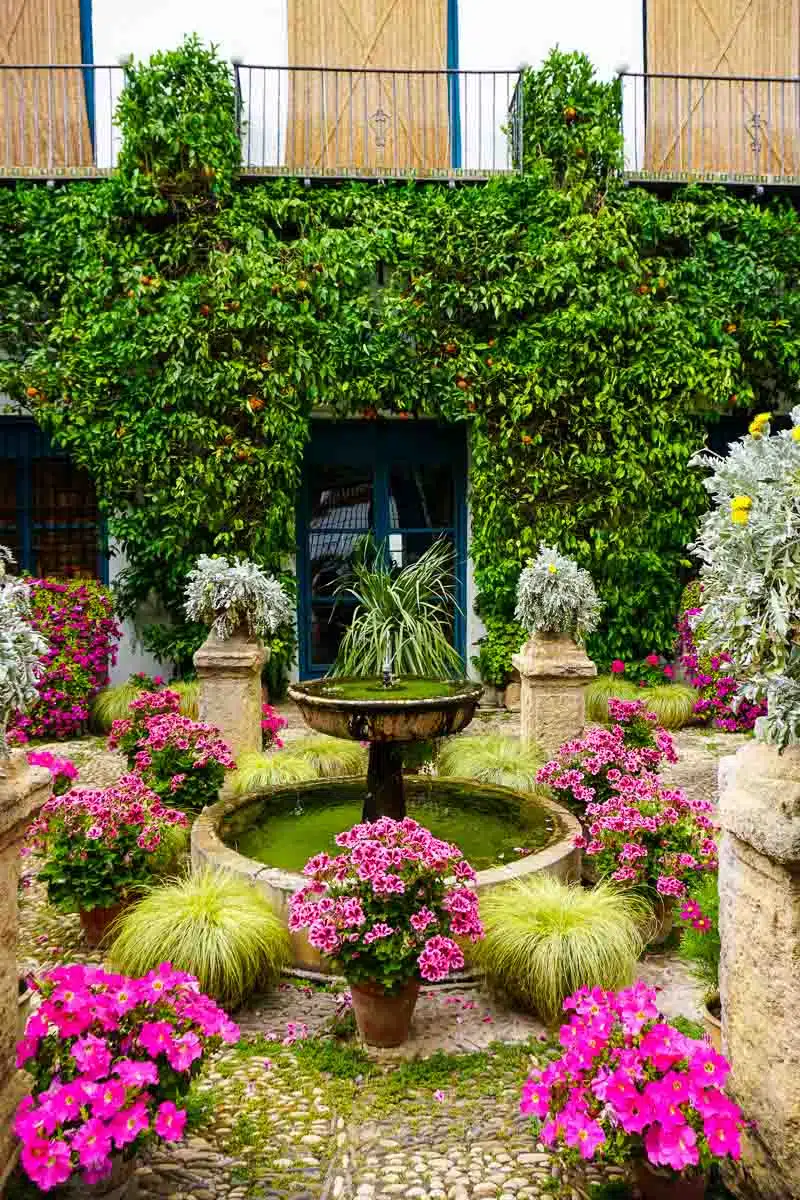
I’ve talked a lot about how much I love Córdoba, a charming maze of winding streets bursting with Moorish and Spanish architecture at the foot of the Sierra de Córdoba. In an ideal world, you’d have a couple of days to explore it, but you can certainly see the most important sights on a day trip.
You can’t say Cordoba without talking about the Mezquita, a Great Mosque-Cathedral with a rich history that, along with Granada’s Alhambra, ranks as one of the most impressive examples of Islamic art and architecture in the region. Its Moorish-style arches and intricate mosaics are the stuff of legend. Plan to spend at least a couple of hours here.
Imposing as the Mezquita is, it isn’t the only piece of history in the city, with the 14th-century Jewish quarter and the Alcazar of the Christian Monarchs also worth the visit.
The city is known for its flower-decked terraces – which burst into bloom during the annual Patios de Cordoba Festival. Even if you’re visiting outside of the festival, you should make a beeline for the pretty Patio de los Naranjos (Courtyard of the Orange Trees), which, as the name suggests, sports an attractive collection of orange trees and palms. The Palacio de Viana might not have the same wow-factor as some of the other places I’ve mentioned but it was one of my favourite spots. While the palace itself is nice enough, it’s the extensive patio gardens (go in spring or summer to see them at their best) that are the real draw.
Top Tip
How to Get There: Take the train from Madrid’s Atocha station to Cordoba station.
Average journey duration: 1 hour and 45 minutes.
Segovia
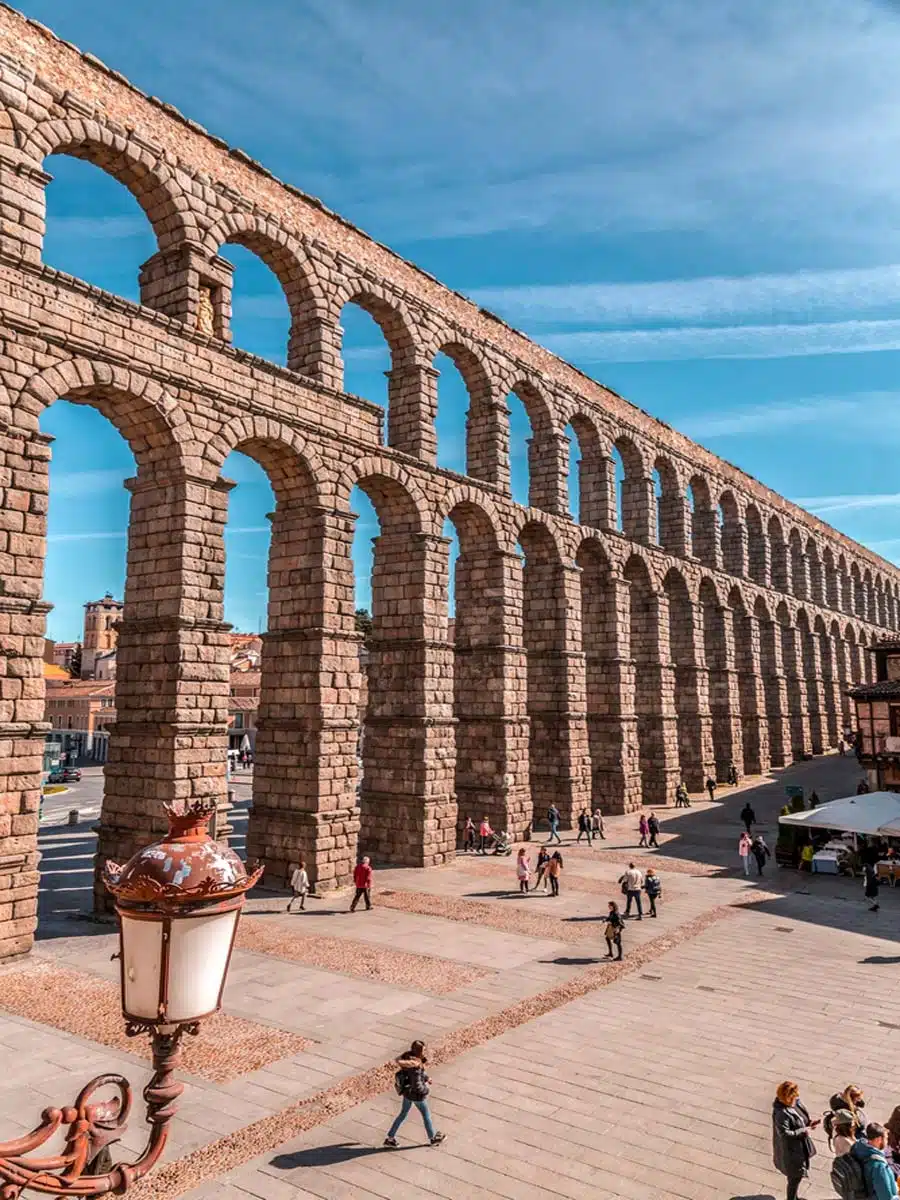
Built on a rocky hill on the northern slope of the Sierra de Guadarrama, Segovia is a picturesque town with a lot of medieval architecture and a unique Roman aqueduct – in other words, a place where history comes to life.
Start by strolling around the city’s walls – built by the Romans and restored in the 11th and 12th centuries, they’re dotted with three impressive town gates.
That’s not the city’s most striking Roman architecture though, that title undoubtedly goes to the Aqueduct – one of the country’s, if not Europe’s, most impressive Roman monuments. Dating back to the 1st century, in the reign of Trajan, it still brings water to the city from the Sierra de Fuenfria 17km away!
Adding to the history is the fairytale-like Alcázar de Segovia (which just so happens to have inspired Disney’s famous castle logo). Built in the 12th century and enlarged in subsequent centuries, it’s a stunner. Climb the tower for gorgeous views of the town and beyond. For views of the Alcazar itself – head to the Mirador de la Pradera de San Marcos.
Top Tip
How to Get There: Take the high-speed train from Madrid’s Chamartin station to Segovia-Guiomar station.
Average journey duration: 30 minutes.
Hassle-free option: Book This Madrid to Segovia Day Trip
Valencia
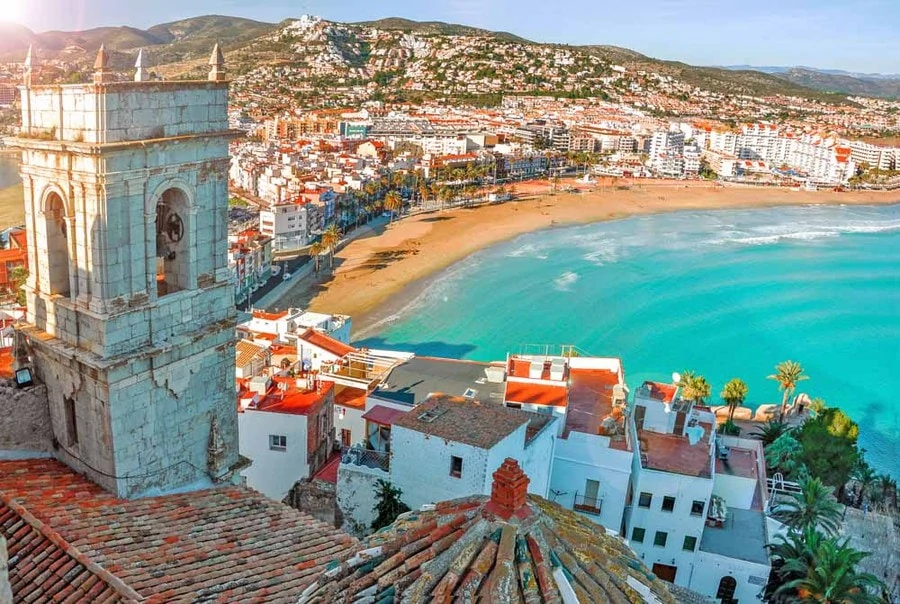
Beautiful coastlines, turquoise waters, and sunshine all year long – what’s not to love about a little trip to Valencia?
The old capital of the kingdom of Valencia might have a lot of history, but there’s nothing stuffy about this cosmopolitan city that’s bursting with life. An ancient saying describes it as “a piece of heaven fallen to earth” and you know what, it’s not wrong.
So, what should you do on your day trip? Start off in the heart of the city at the Plaza del Pais Valenciano – home to the town hall, bullring and lots of relaxed cafes and bars.
The magnum opus of Valencia is the City of Arts and Sciences, a complex with interactive science and technology exhibits, an IMAX theatre, a planetarium, and more. It’s so much fun and you should spend a couple of hours exploring.
I’d also recommend seeing the spectacular architecture at the UNESCO World Heritage Site La Lonja de la Seda, the Silk Exchange – pop inside to see the soaring halls of one of Europe’s most famous gothic monuments.
Top Tip
How to Get There: Take the train from Madrid’s Atocha station to Valencia’s North Railway Station.
Average journey duration: 1 hour and 40 minutes.
Barcelona
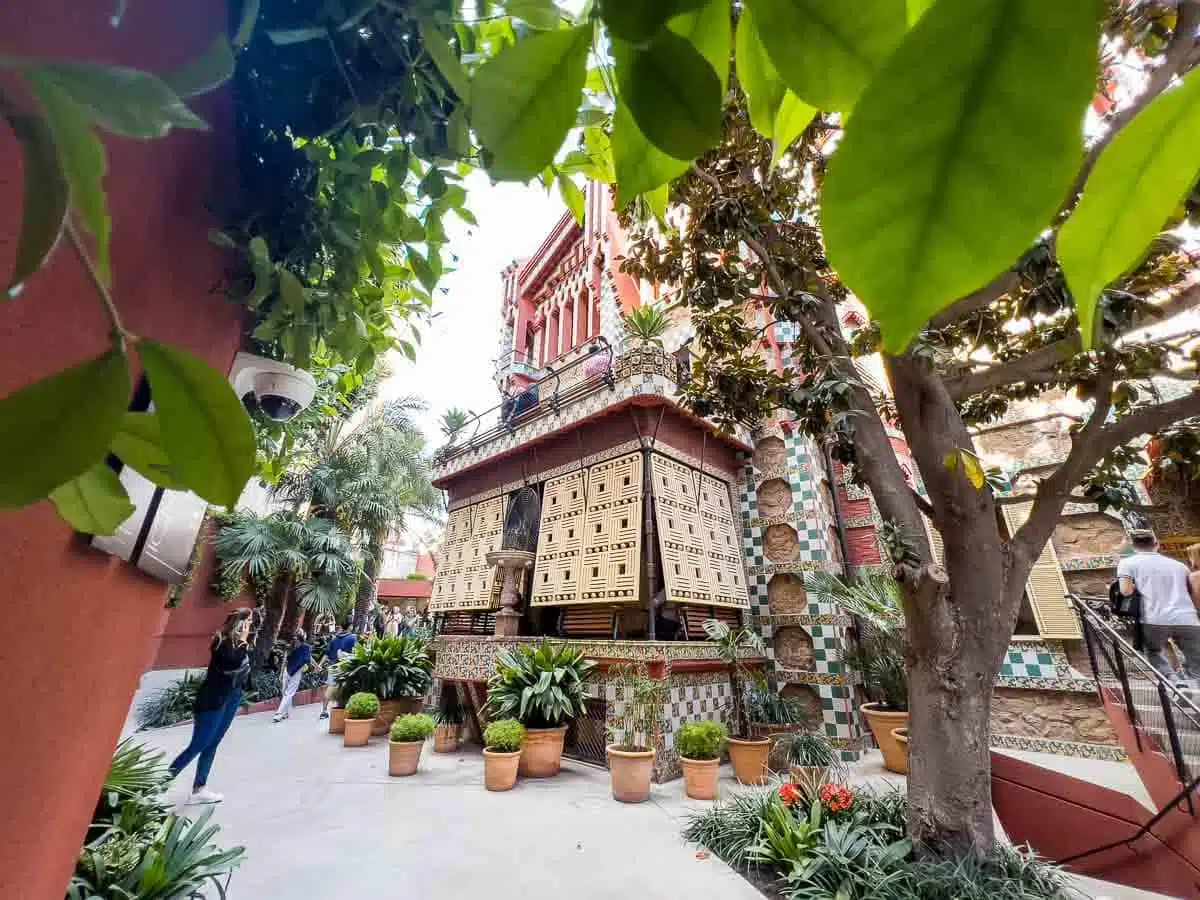
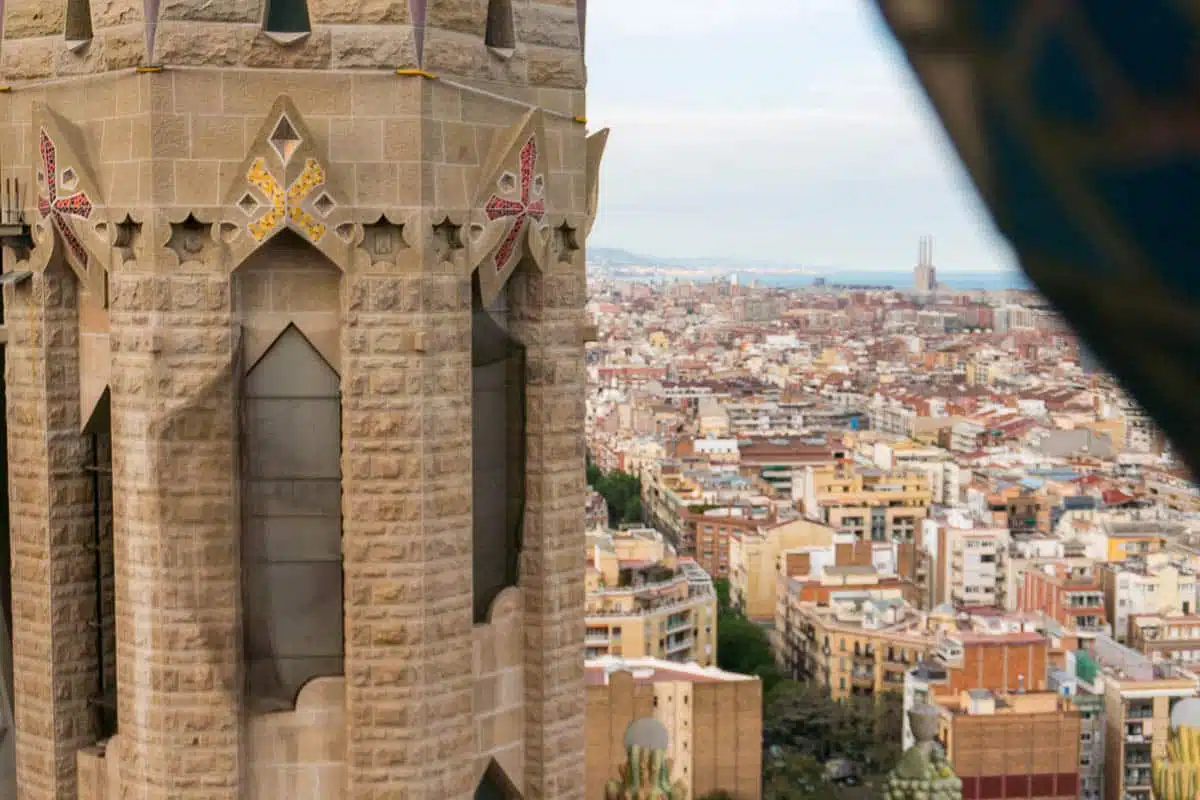
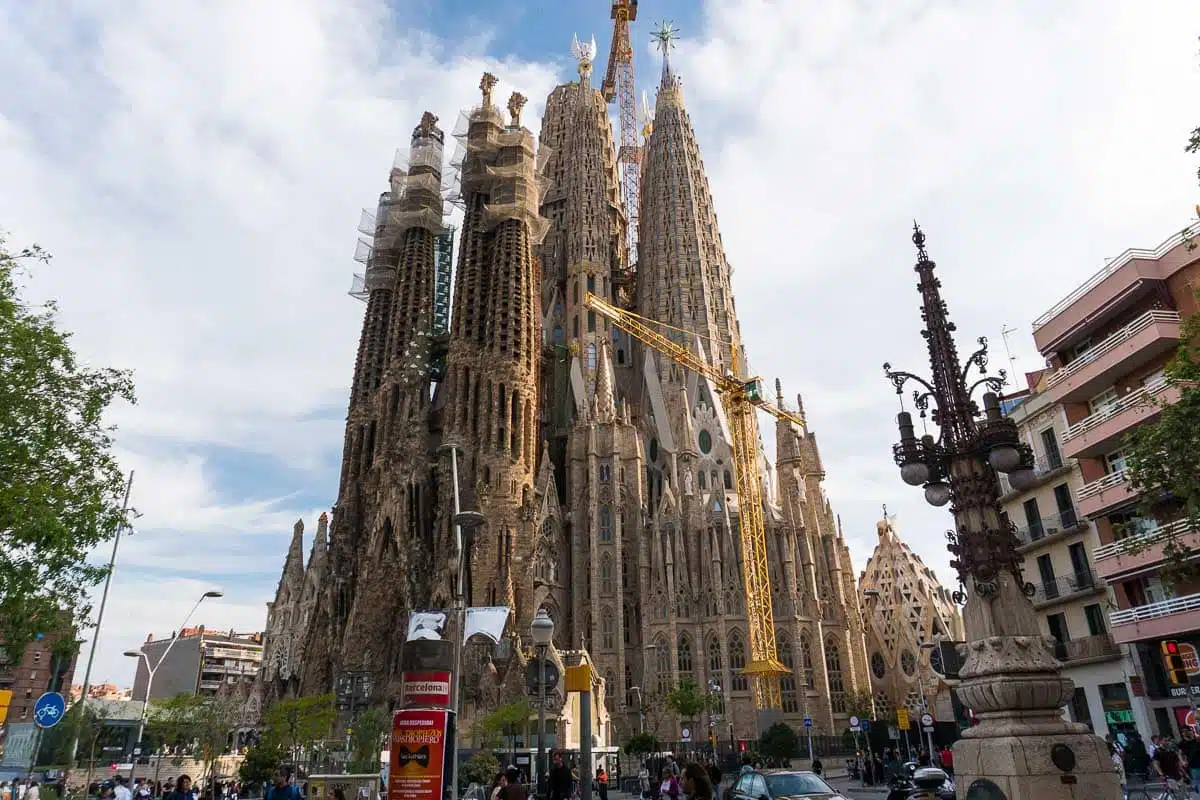
I’ve spent a lot of time in Barcelona (including, most recently, a four-month stint earlier this year), so yeah… a day is a tough call but not impossible! It’s also a bit of a longer train ride, so you’ll have to start early but we love a challenge!
If it’s your first time, go with the crowds and see as many of the works of Antoni Gaudí, the famous architect who left his firm stamp on the city, as possible. The most famous of them, the Sagrada Familia, is (finally) almost finished and is just as stunning inside as out.
After that, head to Eixample to see two more of his famous works Casa Mila (La Pedrera) and Casa Batllo, before treating yourself to a slap-up meal in one of the city’s cool tapas bars.
Wand a real treat? I’d suggest walking over to the El Born area to nab a table at the fabulous El Chigre 1779 or the Cuines de Santa Catarina – a gorgeous restaurant in one of the city’s food markets.
Stroll around El Born and you can also visit two of the city’s best museums – the uber-cool Moco Museum, which has pieces by all manner of contemporary artists including Banksy and Kehinde Wiley. It’s right next to the Picasso Museum, where you can take a deep-dive into the life and works of the father of modern art.
Need more inspo? Read my guide to the best things to do in Barcelona.
Top Tip
How to Get There: Take the high-speed train from Madrid’s Atocha station to Barcelona-Sants station.
Average journey duration: 2 hours and 45 minutes.
Granada
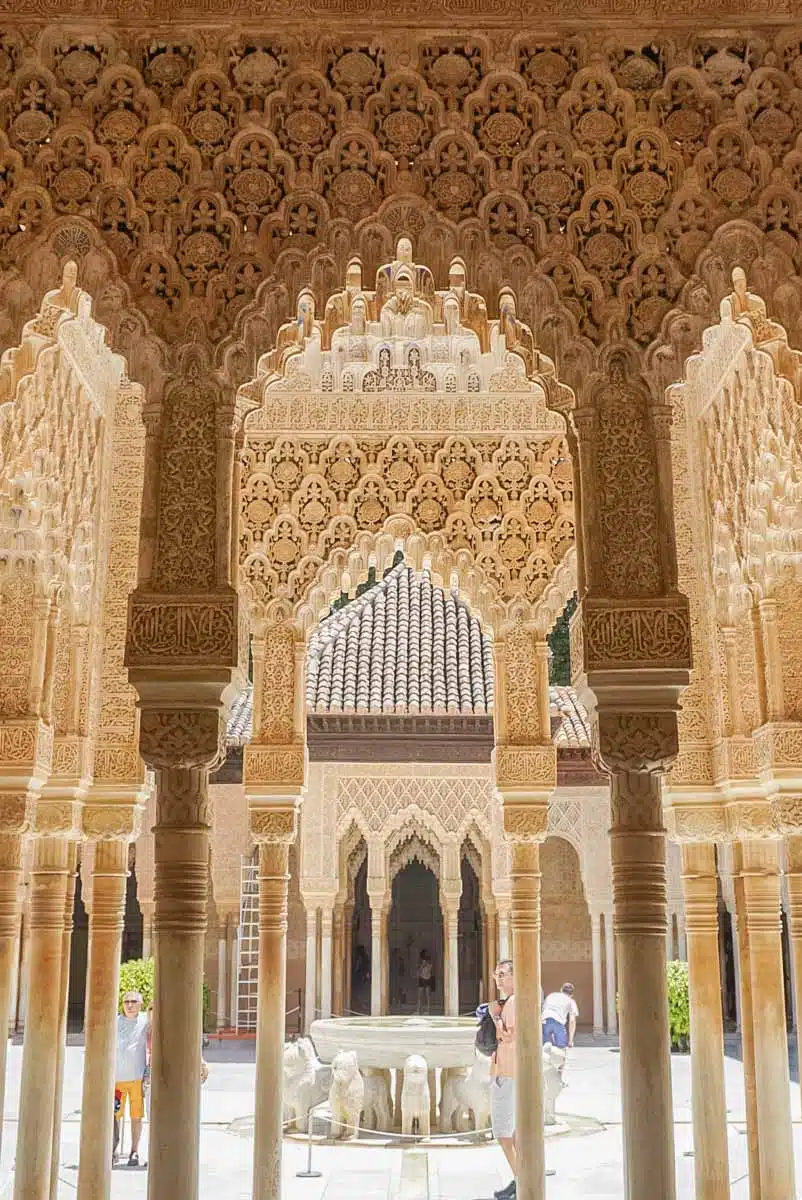
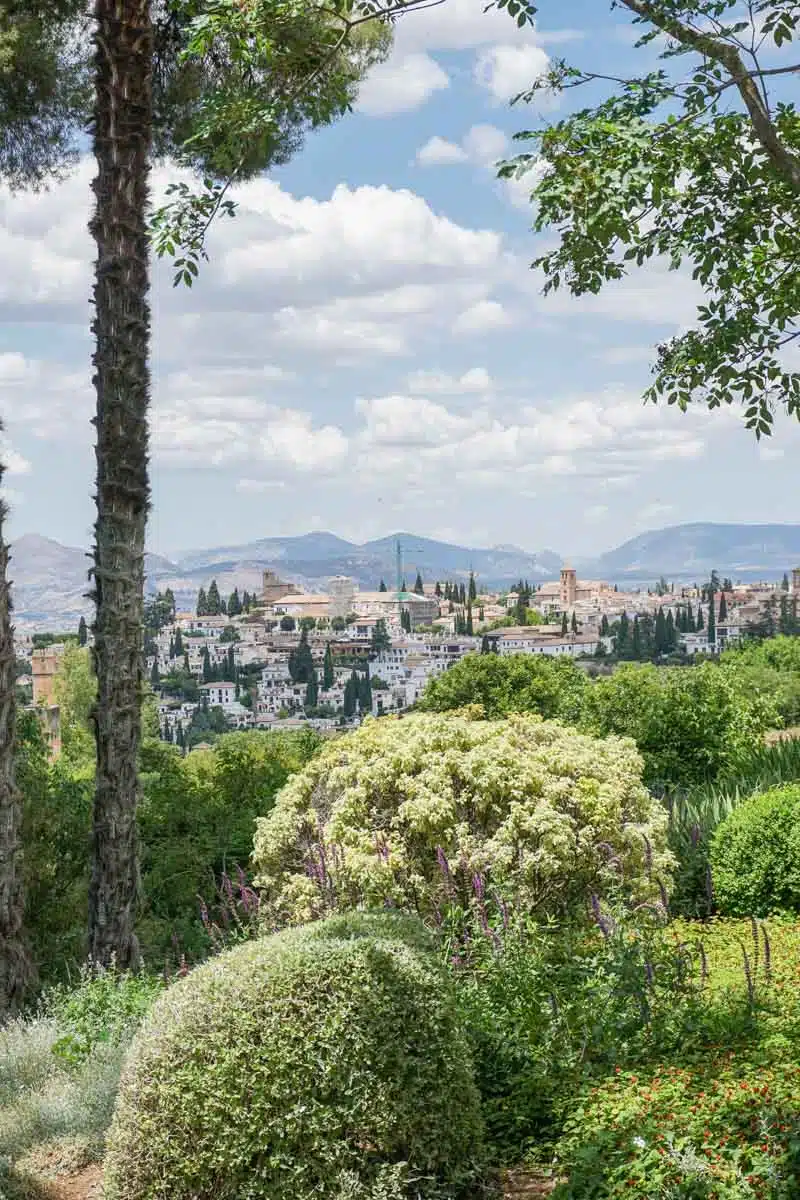
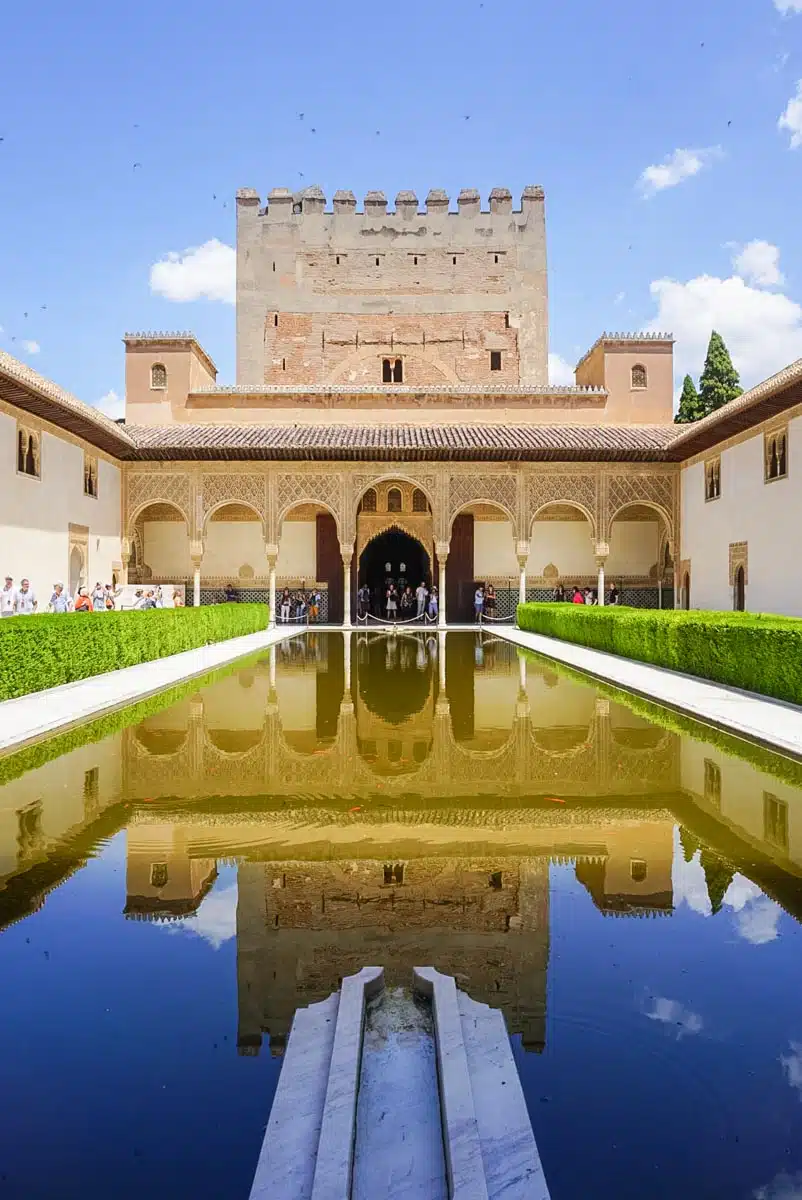
If Moorish architecture is your jam (it certainly is mine), then this next day trip is worth the slog. Madrid to Granada in a day – and back – is considerably long, but I can’t leave it off the list as a possibility — I’d be doing you a disservice.
If you only do one thing while you’re in Granada (and that may very well be the case if you do this as a day trip), it should be the Alhambra, a 14th-century palace complex that is straight-up stunning.
It’s an outstanding example of Islamic palace architecture – keep a close eye out for the Court of the Lions – an imposing courtyard surrounded by 124 columns and 12 black marble lions. The summer palace – the Generalife – and its accompanying gardens are well worth spending extra time in too.
Close by is The Albaicin, a beautiful hilltop neighbourhood with timeworn alleyways and amazing views of Granada.
Got a little more time? Immerse yourself in Granada’s vibrant culture while listening to flamenco music in a cafe or biting into some of the best tapas around.
Top Tip
How to Get There: Take a high-speed train from Madrid’s Atocha station to Granada station.
Average journey duration: 4 hours and 20 minutes.
Salamanca
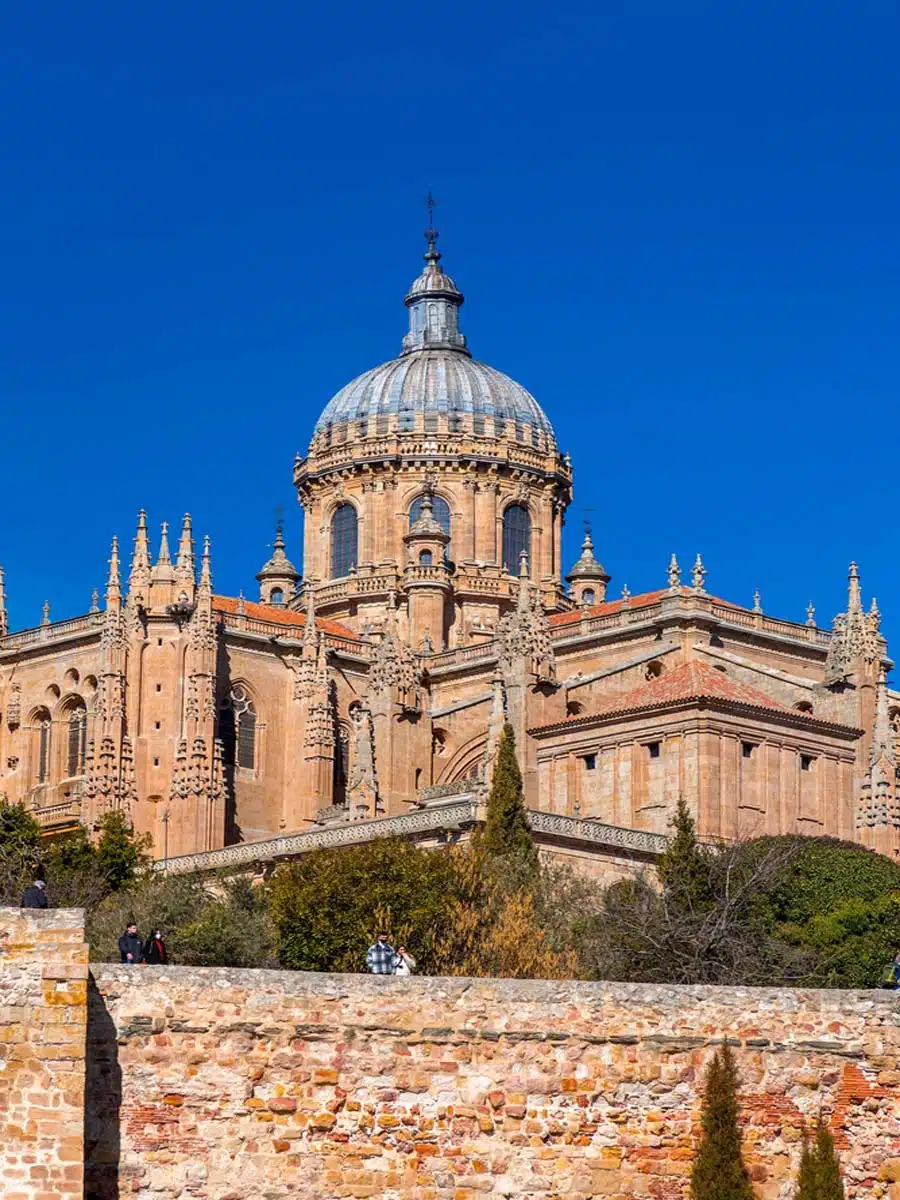
A whole city that’s a UNESCO World Heritage Site? Welcome to Salamanca.
Buzzing with life, culture and beauty, I don’t think Salamanca gets its due as one of Spain’s most charming destinations. Sure, there’s plenty of history, but it’s a big university city too, which keeps things nice and lively.
There’s no better place to start your day in the city than in the 18th-century Plaza Mayor, whose grandiose arcaded buildings were built to impress. It’s got a well-deserved reputation for being one of the prettiest in Spain. Spend some time wandering around the plaza and beyond, taking in the city’s ornate sandstone structures.
The Romans’ former occupation of the city is apparent in the ancient Roman walls.
Much as the university adds life to the city, it’s also a sight in its own right. Founded in the 15th century, it’s one of the most beautiful universities – complete with intricate carvings that date back to the 16th century.
Modern-day attractions include the bridge that overlooks the Tormes River, a magnet for picturesque photos.
Top Tip
How to Get There: Take a high-speed train from Madrid’s Chamartin station to Estación de Tren de Salamanca.
Average journey duration: 2 hours and 40 minutes.
Hassle-free option: Book This Madrid to Salamanca and Avila
Avila
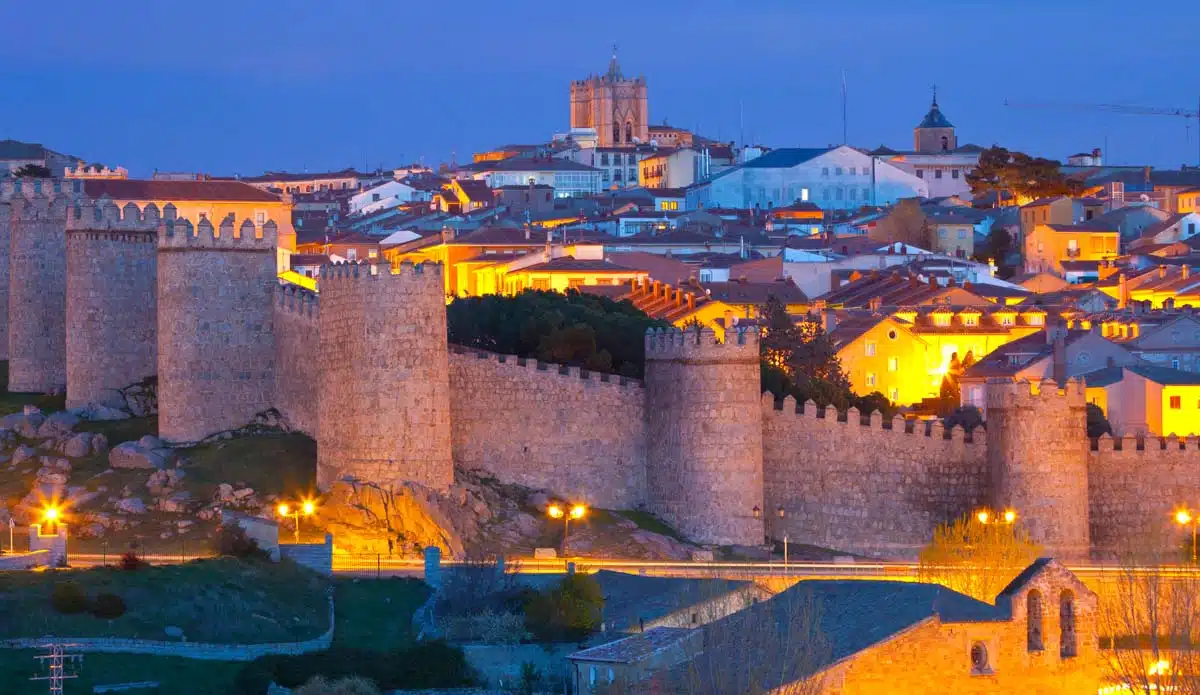
There are few places as eye-catching as Avila. It’s not just the location – on a ridge that falls steeply on three sides, nor is it the wealth of medieval buildings, or even the old city walls – rather it’s a combination of all of that and more.
Is it cliched to say it looks like it was plucked straight from a fairytale? I don’t care – it does.
Plan to walk around the old town walls – at just over 2.5km, it’s an easy walk that skirts past nine gates and 88 towers. The walls were built to protect the city from the Moors who controlled much of Spain at the time.
Hop off at the eastern end to see the city’s Cathedral, a large affair with a number of Gothic touches and tombs. I’m not going to lie – there are a lot of churches in Avila (it has the highest number of churches per capita in the country) but you don’t have much time so focus on the Church of San Pedro, Convento de Santo Tomas and Convento de Santa Teresa, which are the prettiest.
Once the day draws to a close, climb up the Tower of Santa Barbara for magnificent views of the city before you hop back on the train again.PS: When you’re in a city famous for its regional cuisine, it’d be a crime not to stop by its cafes and eateries and enjoy delights like cochinillo (roast-suckling pig) or Castilian soup.
Top Tip
How to Get There: Take the high-speed train from Madrid’s Chamartin station to Avila’s RENFE station.
Average journey duration: 2 hours and 10 minutes
Hassle-free option: Book This Madrid to Salamanca and Avila Day Trip
Seville
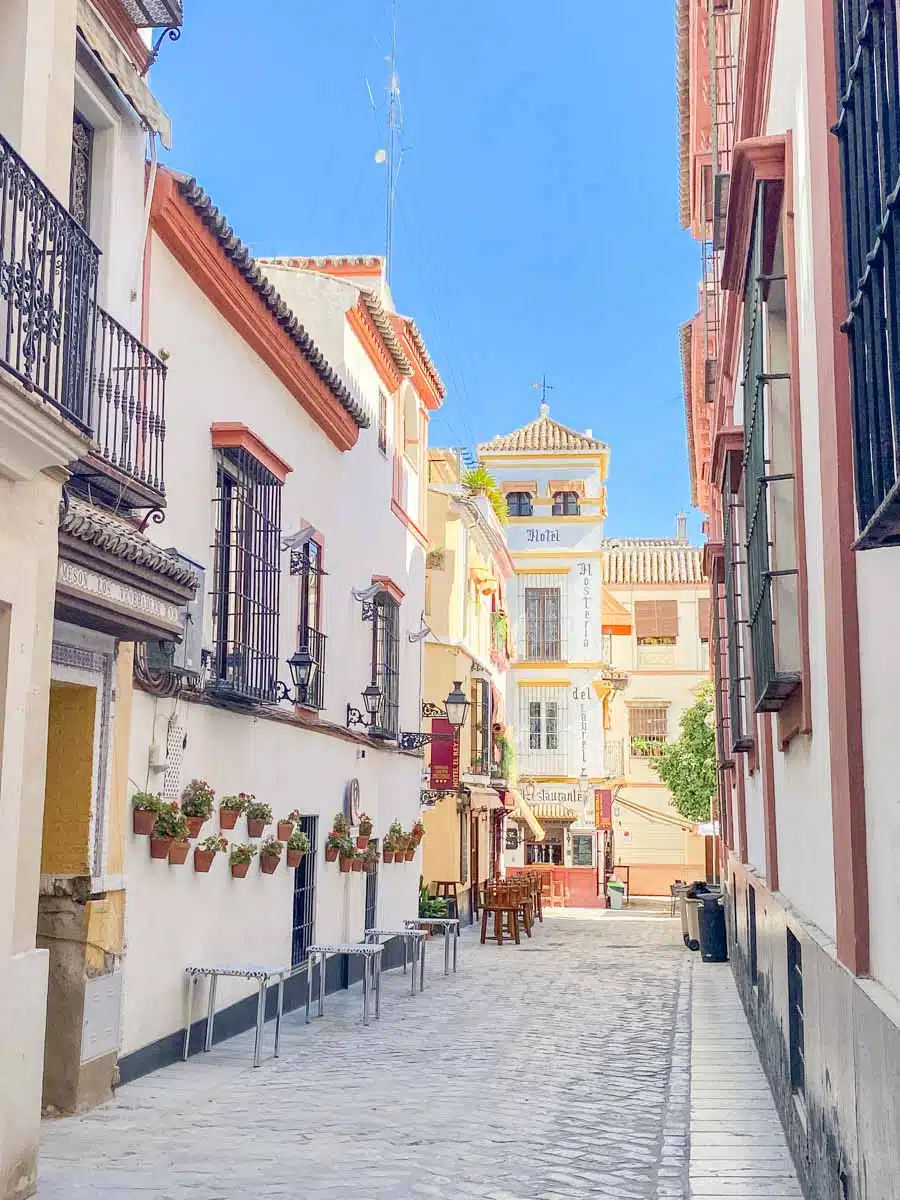
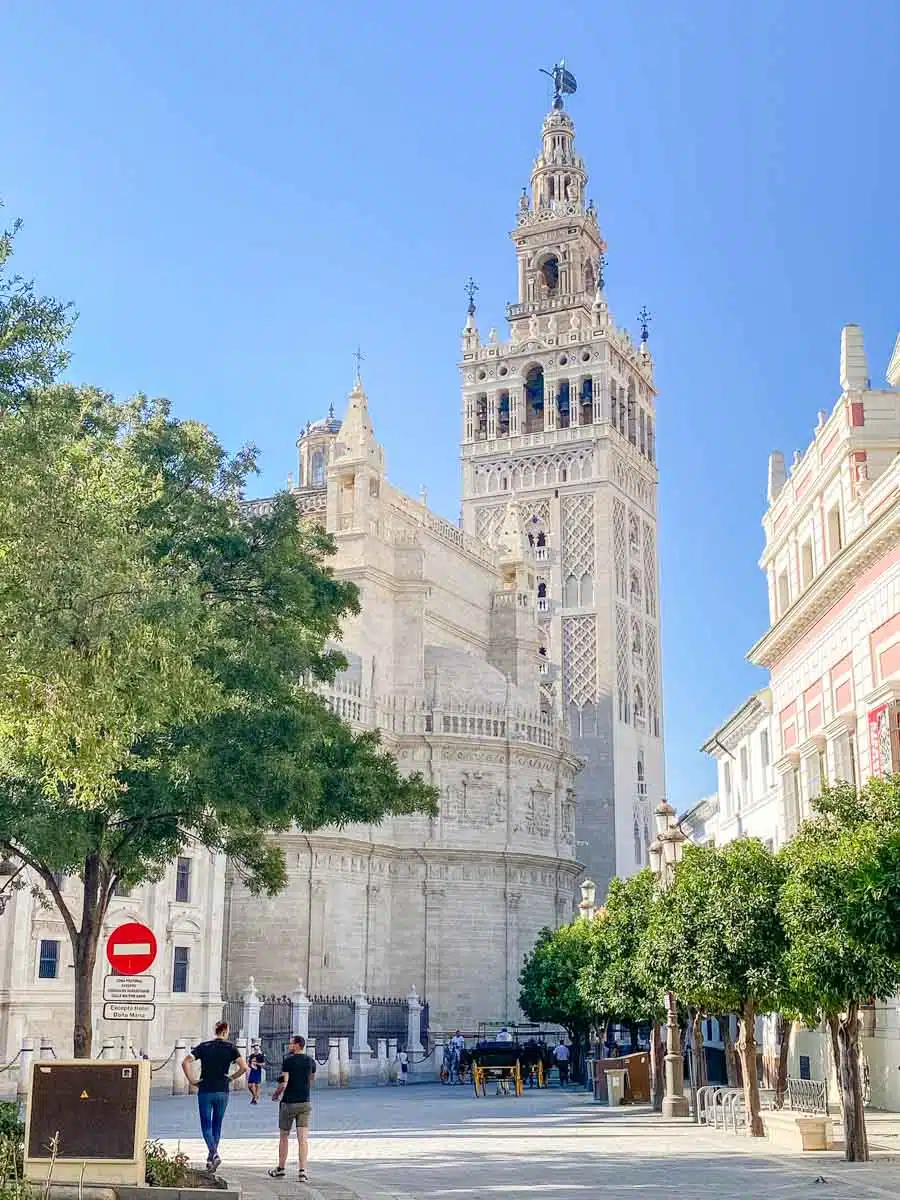
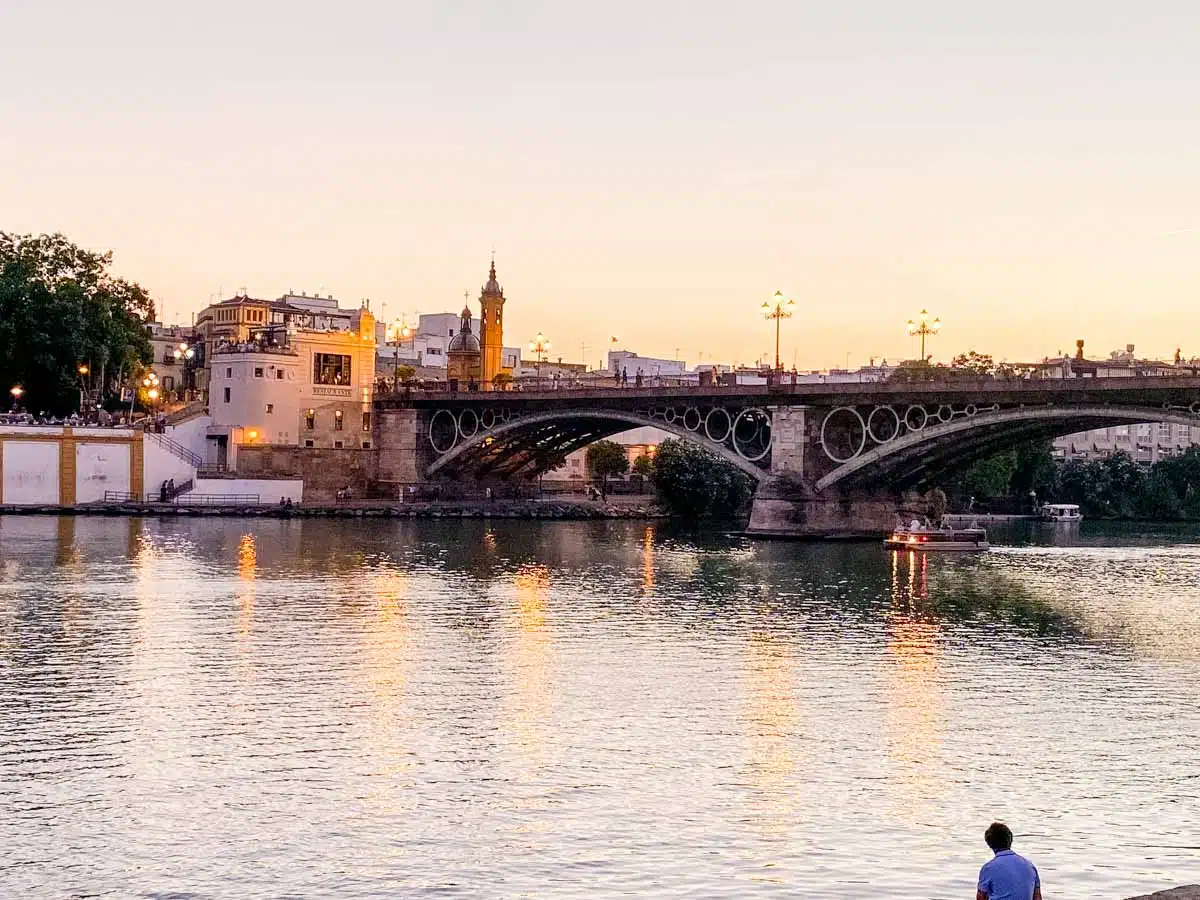
Another of my favourite spots, Seville is a city with bucket loads of culture lent from various civilisations throughout history. If you haven’t visited yet, you should. Again, this is one of the longer day trips, but it is doable if you start early and prepare to get back to Madrid relatively late.
Most of Seville’s history is evident in the city centre, which has the distinction of being a UNESCO World Heritage Site.
Start your day with a trip to the grand Seville Cathedral. It’s splendid – not to mention one of the largest Gothic cathedrals in the world.
Venture inside and you can’t help but feel the sheer scale of it but if you pay attention to the details, you’ll see all kinds of statues and reliefs… along with the grave of none other than Christopher Columbus. If you can, nab a spot on the guided rooftop tour to see a different side of the cathedral (not to mention giving you some stunning views of the city in the process).
That’s all before you get to the Real Alcazar of Seville, an extensive palace complex complete with a lush garden and Moorish architecture (which was also used as a filming location for Dorne in Game of Thrones).
I said it was going to be tough exploring the city – if you have time, try and visit the stunning Casa de Pilatos (Pilate’s House)… but whatever you do, make sure you take the time to try some of the city’s STELLAR tapas spots – I recommend El Rinconcillo, the oldest bar in the city.
Top Tip
How to Get There: Take the high-speed train from Madrid’s Atocha station to Seville’s Santa Justa station.
Average journey duration: 3 hours and 15 minutes.
Ribeira del Duero
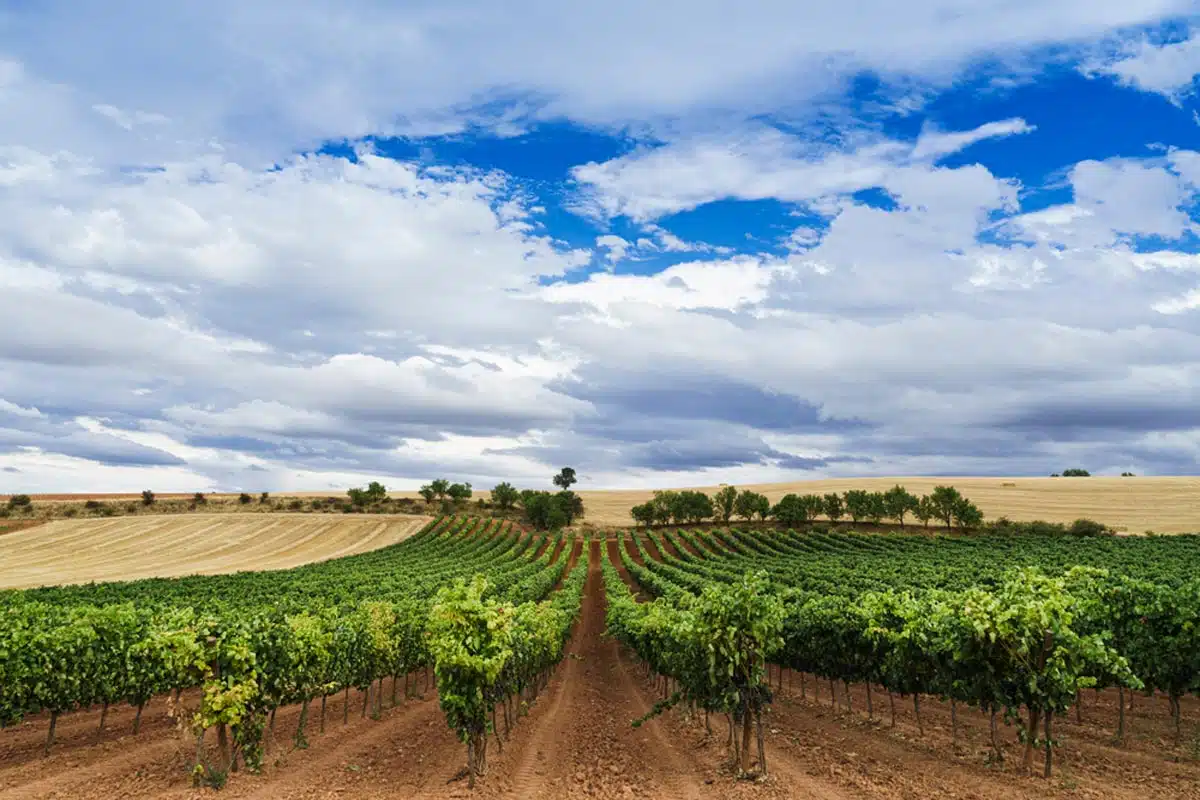
We’ve talked a lot about cities so far in this guide, but the Ribera del Duero offers something different. It’s one of Spain’s best wine regions and renowned for being the home of some rather tasty tipples.
Picturesque Ribeira del Duero boasts many vineyards ready to delight the palates of wine lovers — think fragrant Verdejo and the finest Tempranillo. Vineyards here range from boutique producers to those offering guided tours and tastings.
But that’s not all – the region boasts a number of mediaeval villages and castles – including those in Peñafiel and Peñaranda del Duero, so you get your culture fix between (or instead of) sips.
Top Tip
How to Get There: Take the bus from Madrid to Aranda del Duero, then hail a taxi to the area you want to go to.
Average journey duration: 2 hours and 15 minutes.
Hassle-free option: Book This Madrid to Ribera del Duero Wineries Tour
Burgos
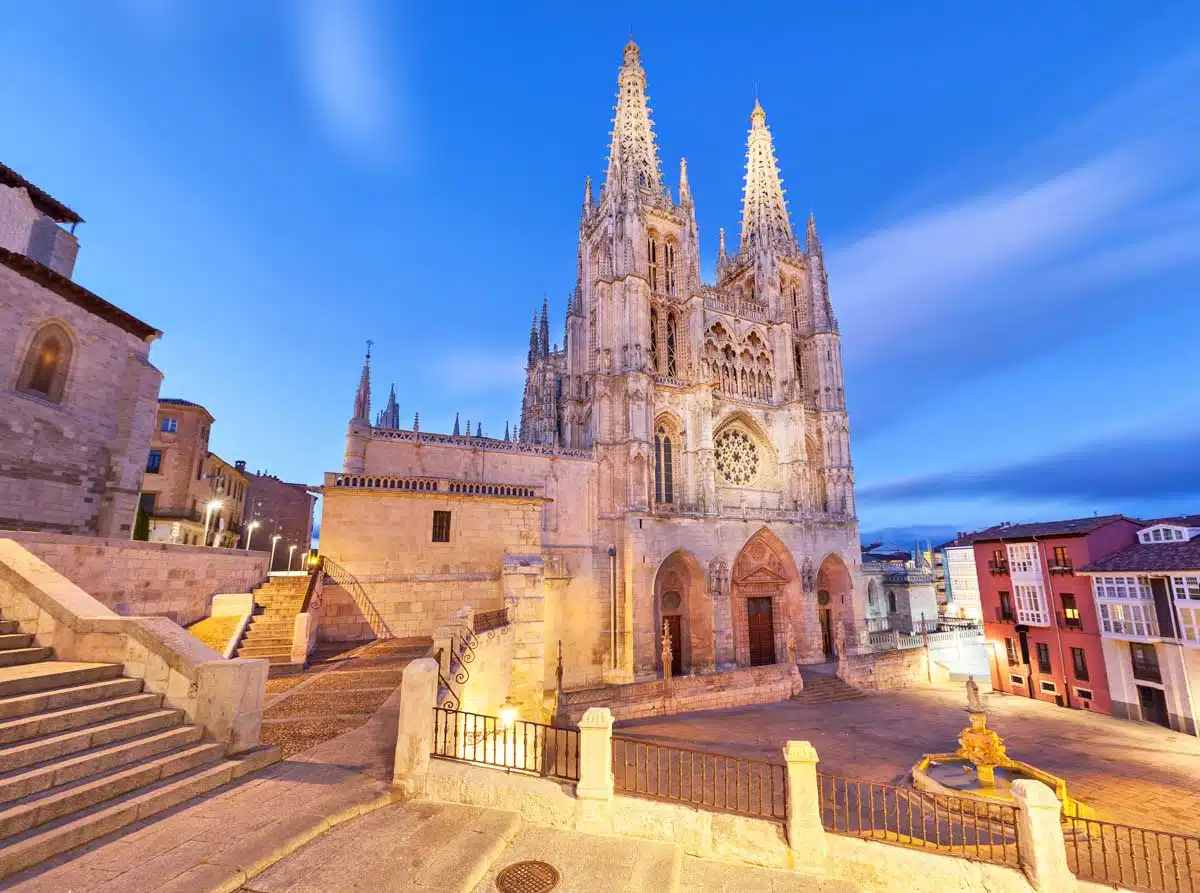
So you’ve seen the biggies and you’re looking for something a little more offbeat? Burgos is a hidden gem in northern Spain with a ton to offer.
Whether a nature enthusiast or a history buff, you’re in for an epic day trip. Stroll along the city’s cobblestoned streets, taking in its magnificent Renaissance-style architecture.
Get up close and personal with the renowned Gothic cathedral, often referenced as an example of Spain’s best religious architecture. It’s a spectacle you’d be hard-pressed to miss, thanks to its sprawling Yellowstone spires that are visible from miles away.
Top Tip
How to Get There: Take the high-speed train from Madrid’s Principe Pio station to Burgos-Rosa de Lima station.
Average journey duration: 3 hours and 50 minutes.
Logrono (And the La Rioja Region)
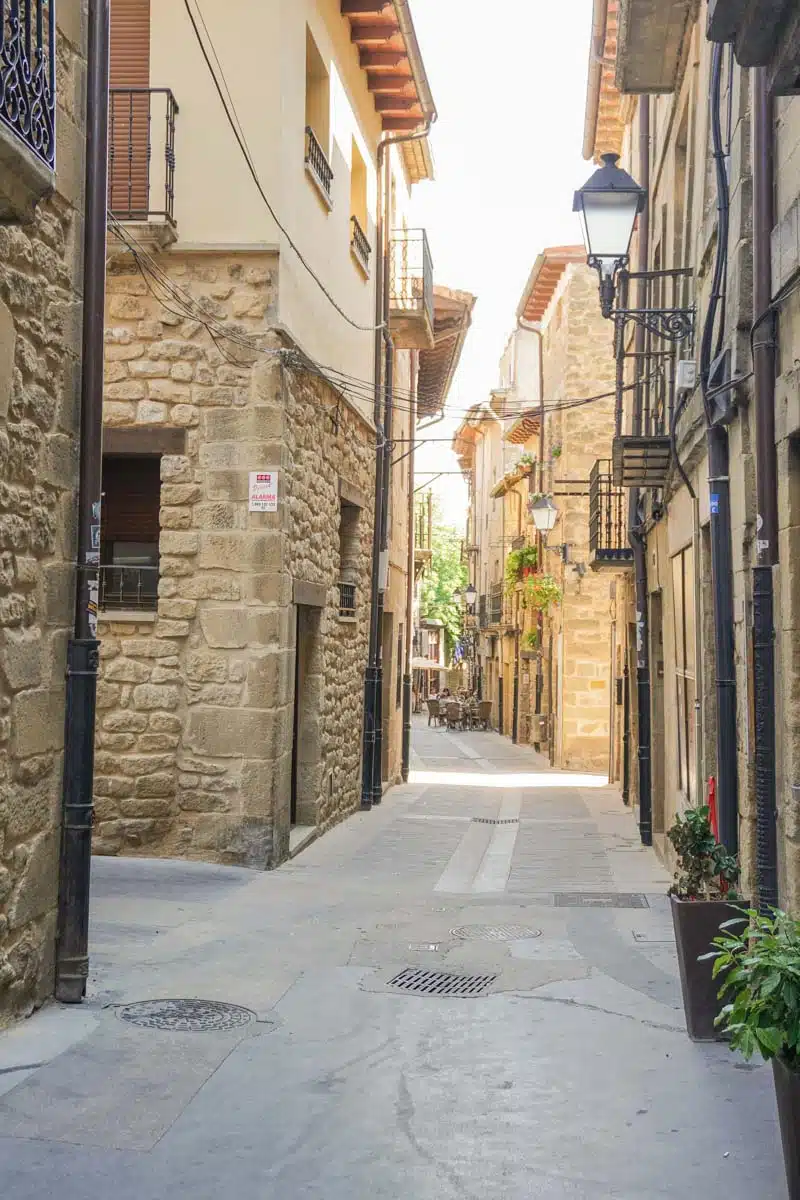
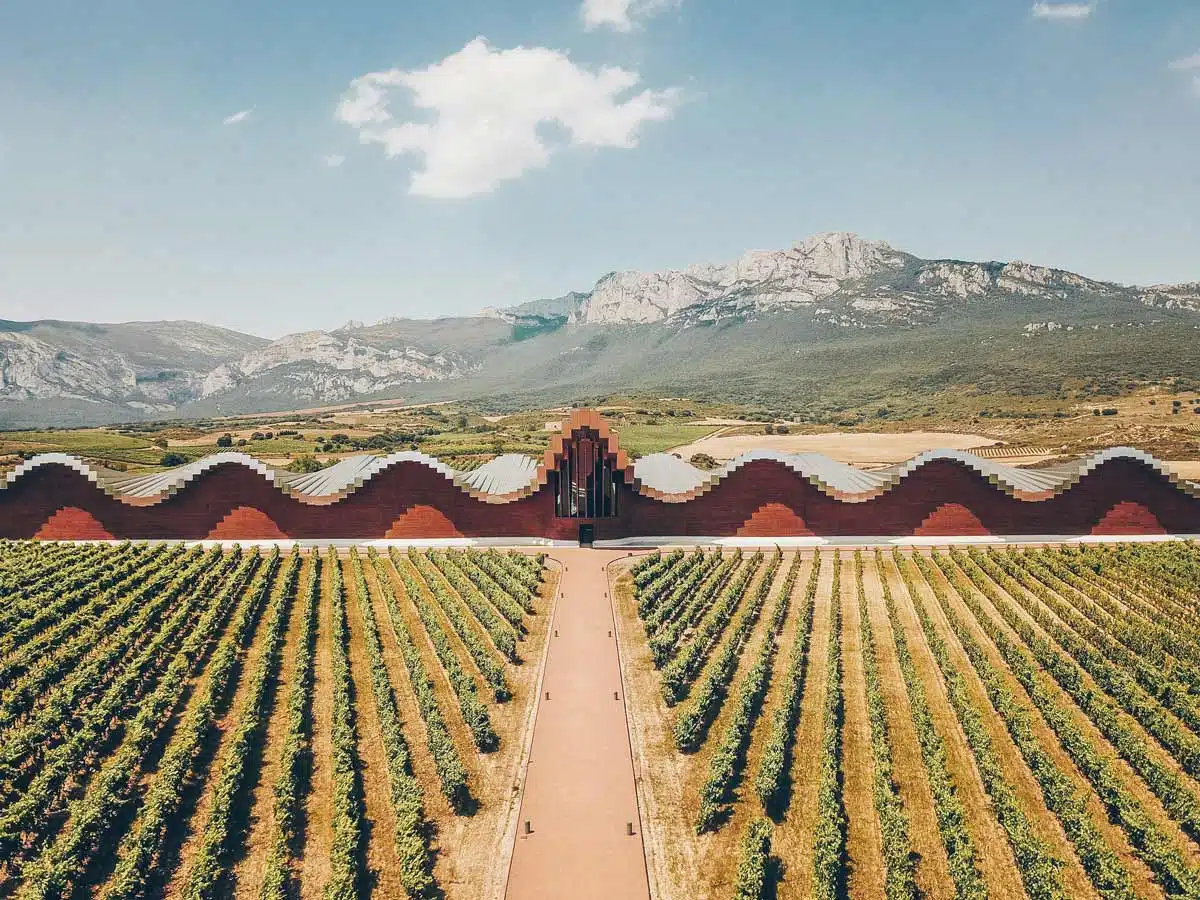
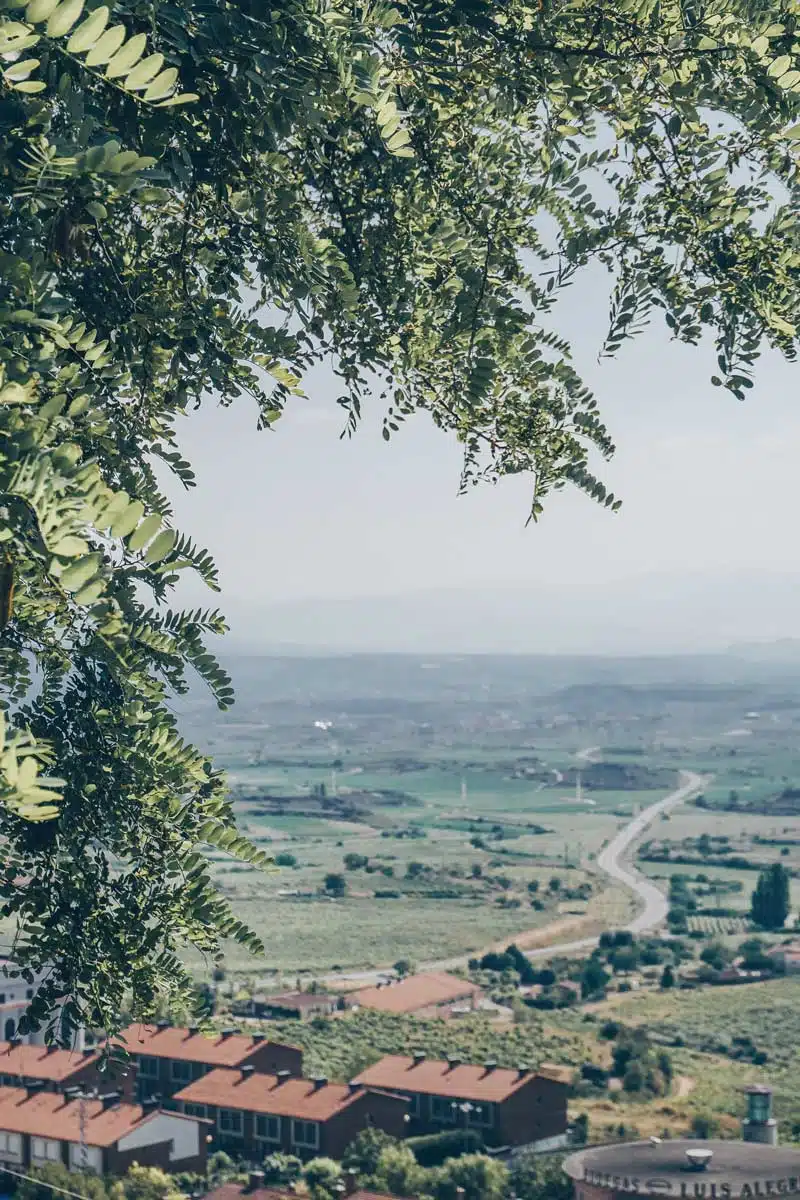
I could just tell you to visit the La Rioja region and be done with it – but that wouldn’t be too helpful. So let me tell you about Logroño.
Logrono is an enchanting city and renowned for its beauty. Verdant vineyards, historic architecture and a stellar culinary scene combine into one hell of a winning destination.
Pop into the Museum of La Rioja, or take a stroll on a short section of the Camino de Santiago hiking trail.
Of course, swinging by the vineyards here should be high on your to-do list – my favourite is the striking Bodega Ysios – a temple of contemporary design sitting in the lush plains outside of town.
But why stop in Logrono when you can expand the journey to the entirety of the La Rioja region? Enjoy the finest grapes at the El Valle de Yerri, stroll through the markets of Alfaro for magnificent souvenirs, or soak up history at the La Fabrica de San Milan.
Top Tip
How to Get There: Take the high-speed train from Madrid’s Atocha station to Zaragoza, then take the bus from Zaragoza’s Central Bus Station to Estación de Autobuses de Logrono. It’s a long trip, so start early.
Average journey duration: 3 hours and 50 minutes.
Cuenca
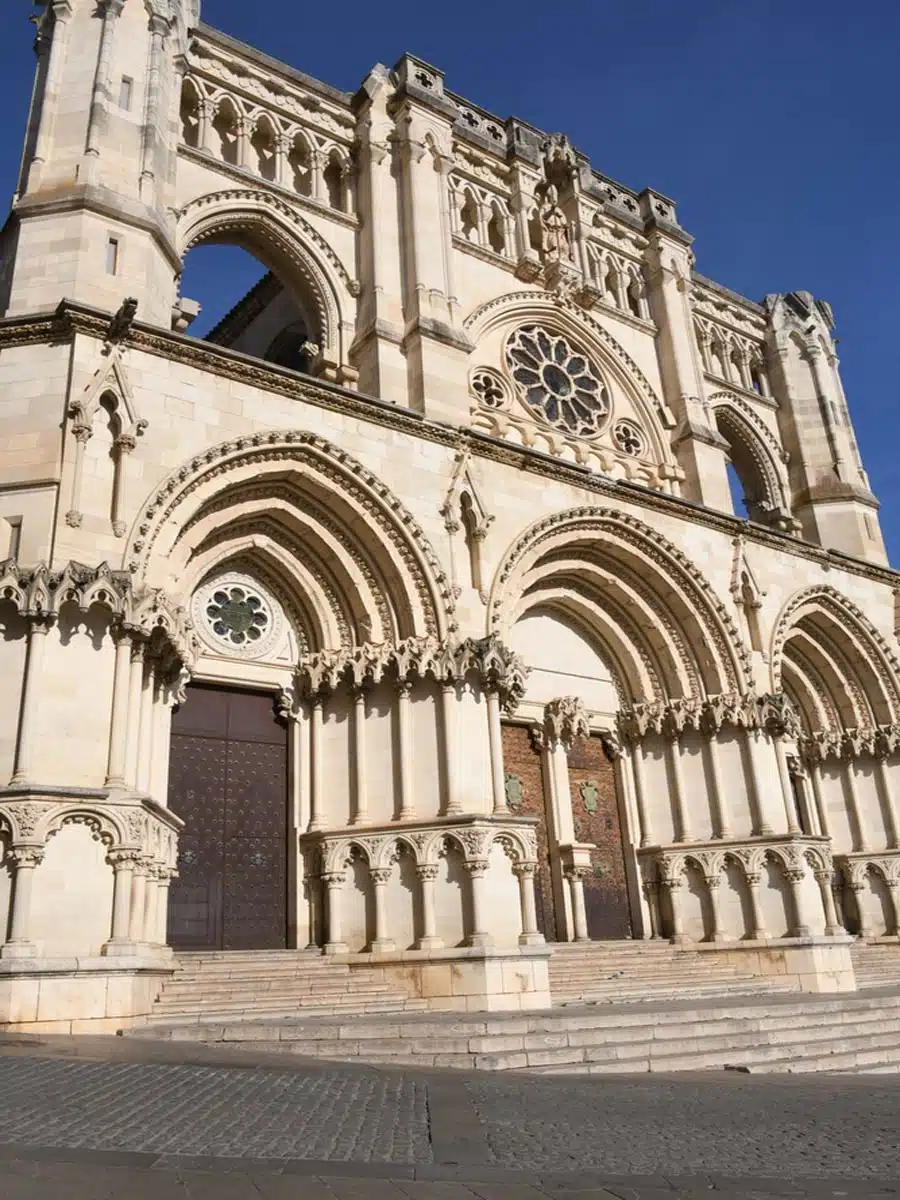
Tucked away in eastern Spain, Cuenca is a charming Andalusian city with history and fun to spare — the nickname “Enchanted City” fits perfectly.
Skip the regular attractions and enjoy something unique when you visit the hanging houses of Cuenca. These ancient dwellings teeter on cliff sides, which is quite the sight to see.
Like many of Spain’s cities and villages, Cuenca is home to an imposing Gothic cathedral. The mesmerising structure is most famous for its trio of domes that have become quite the photography magnet.
Top Tip
How to Get There: Take the high-speed train from Madrid’s Atocha station to Cuenca station.
Average journey duration: 2 hours and 32 minutes.
Hassle-free option: Book This Madrid to Cuenca Tour
Puerto de Navacerrada
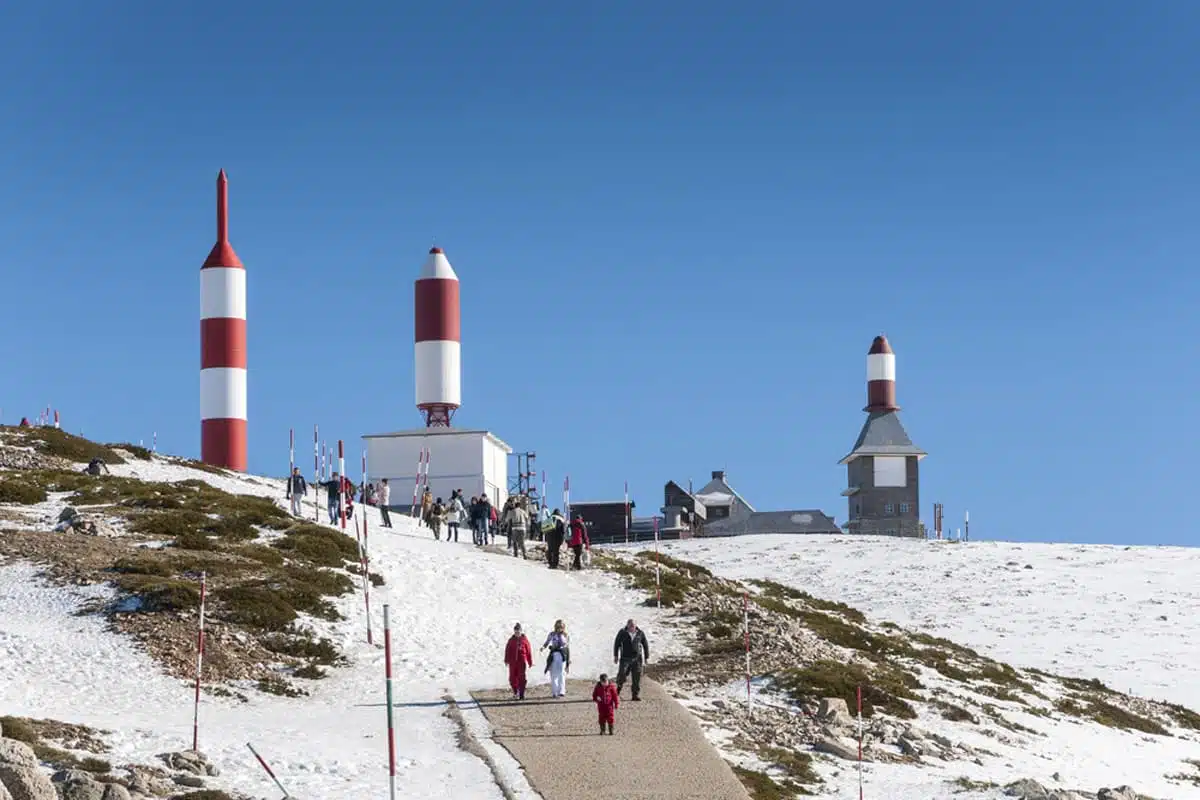
Take a break from historical sites and fascinating art galleries and let loose at the Puerto de Navacerrada.
Located in Spain’s stunning Sistema Central mountain range, you can escape city life and zoom down snowy slopes. Oh, and thanks to its elevated location, you’ll enjoy impressive panoramas surrounding the mountain range.
In the summer, you can enjoy hiking along the many trekking paths while soaking up the incredible views and its lush green valleys.
Top Tip
How to Get There: Take the bus from Intercambiador de Moncloa to CTRA.M601-Club Alpino.
Average journey duration: 1 hour and 20 minutes.
Guadalajara
Guadalajara is where red-tiled roofs and centuries-old churches compete for attention in the otherwise modern landscape. This small city, located just an hour from Madrid, offers visitors an amalgamation of both old and new.
Here, you can take strolls through a leafy area around the Zancara River and visit the historic Concordia Park with a fantastic fountain. Stop by the Palacio del Infantado and the Pantheon of the Duchess of Sevillano for a healthy dose of architecture and history.
Top Tip
How to Get There: Take the train from Madrid’s Chamartin station to Guadalajara’s Azuqueca station.
Average journey duration: 1 hour.
Madrid Day Trips: Map
Read More Madrid Travel Guides
Love This? Save and Share on Pinterest
